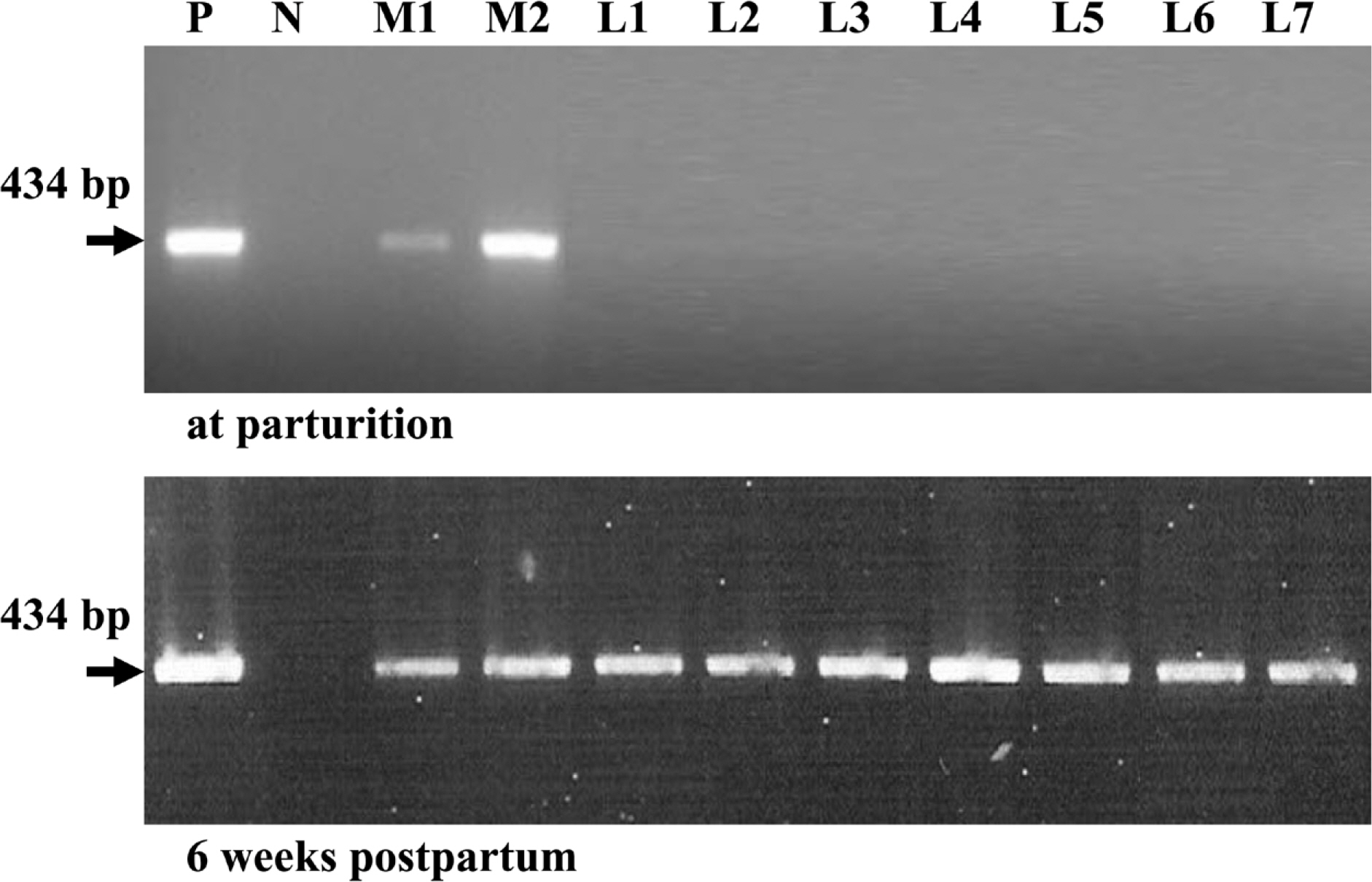Lab Anim Res.
2010 Sep;26(3):319-321. 10.5625/lar.2010.26.3.319.
Postpartum Transmission as a Major Route of Mother-to-Child Helicobacter felis Infection
- Affiliations
-
- 1Center for Animal Resources Development, Wonkwang University, Iksan, Korea.
- 2Department of Biochemistry, School of Medicine, Wonkwang University, Iksan, Korea. youngkim@wku.ac.kr
- 3Institute of Animal Experiment & Efficacy Evaluation, Wonkwang University, Iksan, Korea.
- KMID: 2312085
- DOI: http://doi.org/10.5625/lar.2010.26.3.319
Abstract
- In this study we investigated maternal Helicobacter felis (H. felis) infection status to determine the potential of maternal transmission. Pregnant Beagle dogs were infected experimentally with H. felis. Following the experimental design, the stools of the mother and litters were isolated and assessed for transmission of H. felis at parturition day, 1-week old age and 6-week old age respectively. Polymerase chain reaction (PCR) was used to examine the presence of transmitted H. felis. All litters showed no transmission of H. felis at parturition day. However, they revealed 14.3% and 100% at 1-week old age and 6-week old age respectively by PCR. These results suggested that vertical infection during prenatal period or delivery procedure is unlikely as a route of mother-to-child H. felis infection. It might be acquired H. felis through breast-feeding, contaminating saliva and fecal-oral during co-habitat.
Keyword
MeSH Terms
Figure
Reference
-
Baele M.., Van den Bulck K.., Decostere A.., Vandamme P.., Hänninen M.L.., Ducatelle R.., Haesebrouck F.2004. Multiplex PCR assay for differentiation of Helicobacter felis, H. bizzozeronii, and H. salomonis. J. Clin. Microbiol. 42(3):1115–1122.De Bock M.., Decostere A.., Hellemans A.., Haesebrouck F.., Ducatelle R.2006. Helicobacter felis and Helicobacter bizzozeronii induce gastric parietal cell loss in Mongolian gerbils. Microbes Infect. 8(2):503–510.
ArticleKim S.H.., Kim O.2004. Application of Consensus Polymerase Chain Reaction for Monitoring of Helicobacter Species. Lab. Anim. Res. 20(4):316–320.Kim S.K.., Cho S.J.., Kim O.2006. Detection and identification of secreting Helicobacter species from cats. Lab. Anim. Res. 22(3):243–247.Lee H.A.., Park Y.S.., Kim O.2007. Prevalence of Helicobacter Species in Feces of Dogs. Lab. Anim. Res. 23(3):339–344.Oh H.G.., Kim Y.., Lee H.A.., Kim O.2009. Detection of Helicobacter heilmannii infection in a cat. Lab. Anim. Res. 25(4):385–391.Rothenbacher D.., Inceoglu J.., Bode G.1999. Helicobacter pylori among preschool children and their parents: evidence of parent-child transmission. J. Infect. Dis. 179(2):398–402.Rothenbacher D.., Inceoglu J.., Bode G.2000. Acquisition of Helicobacter pylori infection in a high-risk population occurs within the first 2 years of life. J. Pediat. 136(6):744–748.
ArticleRothenbacher D.., Winkler M.., Gonser T.2002. Role of infected parents in transmission of Helicobacter pylori to their children. Pediatr. Infect. Dis. J. 21(7):674–679.
ArticleTorres J.., Perez-Perez G.., Goodman K.J.2000. A comprehensive review of the natural history of Helicobacter pylori infection in children. Arch. Med. Res. 31(5):431–469.
Article
- Full Text Links
- Actions
-
Cited
- CITED
-
- Close
- Share
- Similar articles
-
- Epidemiology and Transmission Route of Helicobacter pylori Infection
- Time Trends in the Prevalence of Helicobacter pylori Infection and Future Directions in Korea
- Evaluation of assays to detect Helicobacter felis infection in cats
- Updates on Preventing HIV Infection
- Survey of Helicobacter infection in domestic and feral cats in Korea


